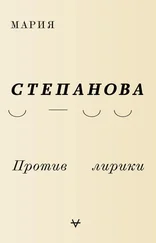A little earlier, at the beginning of the 1960s, Rufa, one of my mother’s distant cousins, came to Moscow from Saratov and stayed with us. She came home one evening to find Sarra sitting on her own in a rocking chair in a dark room: “Why on earth didn’t you turn the light on? You could have been reading a nice story!”
“Oh I just have to shut my eyes and I see such stories, my sweet girl.”
*
In her old age, or so I was told, she used to sing. There was always music in the house (on the title page of one very old romance published in 1934 there was an inscription by the author, who went to the same Moscow holiday camp as Sarra: For you to sing ). An old Blüthner piano with yellowing keys stood neglected in the corner of the apartment. Occasionally Rufa’s husband, Alik, a professional pianist, visited from Saratov to play in Moscow’s concert halls, and in the mornings he would slide his hands into the Blüthner’s mouth and the piano would growl and lisp obediently. But Great-Grandmother remained indifferent to hers or anyone else’s musical accomplishments — she saw music as a trivial occupation, something to fill an idle hour. I remember tales of her calling the guests, who had just gathered at the piano, to the dinner table, saying, “Alik will play along as we eat.”
Her return to singing, just before her death, was of a different order, as if the songs of her youth had returned and settled in her throat, releasing their long-forgotten words, shorn of meaning, dim and terrible: “You Fell, The Victim of a Fateful Battle,” composed in the 1870s and sung at the graveside, the basis for the funeral march in Shostakovich’s Eleventh Symphony. Or the “Song of Warsaw,” the revolutionary song from the Barricades in 1905, with its “March, march ye toilers and the world shall be free.” And all the repertoire of underground songs sung by the kids of 1900, which formed the living language of their battle and their slightly postponed victory. Fifteen-year-old Mayakovsky in Butyrka prison, schoolboy Mandelstam with his Erfurt Program, thirteen-year-old Tsvetaeva at revolutionary gatherings in Yalta — all of this was infused with historical necessity, and hovering overhead, the gramophone buzz of the relentless “Worker’s Marseillaise”: “Let Us Denounce the Old World.”
The memoirs of the revolutionary movement at the turn of the century make it sound as if they were always singing, even rather demonstratively replacing speech with song. The stories of strikes and the secret meetings of conspirators were punctuated by musical interludes: “we set off up the river singing revolutionary songs,” “we returned by boat singing revolutionary songs again and waving red flags,” “after his speech we ended the meeting with songs.” “The Marseillaise” is seamlessly replaced by “The Internationale.”
Somewhere among the students and girls, the Mayday meetings and leaflets, is the indistinct shadow of seventeen-year-old Sarra Ginzburg, marching, clutching hands with another, as the letter describes. The gymnasium she studied at in Nizhny Novgorod was only a few houses away from the Sverdlovs’ Engraving Workshop. It was noisy and busy in the workshop and this is where she met all of the comrades of her best friend Sarra’s brother, Yakov Sverdlov. In the darkly mysterious memoirs written collectively by three Sverdlov siblings many years later, there’s a story about one brother going for a boat trip with their sister and her friend (the waves were rough and threatened to overturn the boat, but the girls didn’t cry because they were more afraid of the brother than the water); Sancho Pancho moves through the work silently like a shadow; long lines of schoolboys engage officer cadets in fisticuffs; prison visitors bring sweets to the prisoners. A strange combination of comfort and horror dyes the eggshell of their youth, as if with onion skins. “Between 1901 and 1903 she [Sarra Sverdlova] often passed on notes, carried proclamations, printed leaflets on the hectograph, and did other tasks that were illegal.” Her friend must have done much the same: in 1906 Sarra Ginzburg is predictably arrested for distributing leaflets at the barracks.
When I was fourteen, in 1986, my mother decided to take me to Leningrad — she had long promised to show me her favorite city. It was summer, the time of the “White Nights,” when the sun hardly sets, and we sat together, first on one damp bench, and then another. She got quickly tired, so all the walks we took were short, and ended with us resting on benches, the mass of pigeons pecking at the cracked paving stones around us.
Occasionally I would badger her for presents, as if a new place was hardly worth visiting without a little souvenir of some sort that I could carry home as a memento, to console myself when the adventure was over. I grieved over a completely useless piece of tat being sold for the outrageous price of three and a half rubles in the theater shop Maska on Nevsky Prospect. It was a theatrical prop, a “historical” ash-colored lock of hair that fastened at the temple and fell as a long curly braid down to the lady’s soft neck. The braid felt completely plastic to the touch, it was impossible to think of an ordinary nontheatrical situation in which it could have been worn, but with my mop of black curls I only yearned all the more to keep it treasured in my desk drawer.
On the first evening in Leningrad we went walking toward the stretch of river and, beyond it, the dark walls and glinting golden spire. “That, Masha, is the Peter and Paul Fortress,” said my mother, “where Great-Grandmother Sarra was imprisoned.” And we both made a goose-like movement with our necks, stretching and leaning down at the same time, as if we were both bowing to Sarra, and attempting to escape our own skins.
We gave the Peter and Paul Fortress our minute attention, as we did the fountains of Peterhof, the side rooms and staircases of the Hermitage, and even the Chinoiserie of Oranienbaum. It beggars belief how much we managed to see on that trip. The Fortress that June was as bare as a parade ground, hollow as a Christmas decoration. It bore no resemblance to anything. Everything that had happened there was long over, my Sarra had been blinked away, like a mote in the eye.
Whenever I have visited Petersburg since, I have always gone out to the banks of the Neva to face the granite wall of the Fortress, the angel at the top of the spire and the narrow river beach below — and I’ve made the same goose-like bow, my neck stretched forward, bowing either to my great-grandmother or to the place that held her and then spat her out, as the whale did to Jonah.
The Trubetskoy Bastion Prison was built in the early 1870s. It had sixty or so cells and two solitary confinement cells, allowing for a constant flow of hundreds of “political prisoners.” Sarra’s stay in the Fortress was sure to have been in here: dirty-white ceiling, gray walls, prison issue sheets, round-toed prison shoes. The corridors have a life of their own, twisting abruptly like elbows; the cells breathe their underground chill on you as you approach the doors, and the iron bed frames cast their cross-shaped shadow on the stone wall. The beds and the iron tables, bolted to the walls and floor, resemble the furniture in sleeping cars on a train: a white mattress, two pillows, a coarse blanket. Every possession had to kept in plain sight, books, mug, comb, tobacco. The archivists in the Fortress could not help me with my inquiries. It was too late, there was no trace of Sarra Ginzburg in the papers left in the Bastion — the place would not acknowledge her existence.
And now where to look for her? There were so many like her. It isn’t easy, after everything that has happened, to picture the wholeheartedness with which those young people threw themselves into battle, yet it still rises, like steam from bread, from the memoirs, documents, the crudely typed police spy reports: “They unrolled a red scarf with ‘Down With Autocracy’ written on it in ink”; “Propaganda classes take place one-to-one or in small groups on boats”; “In the Passazh Inn we caught a group of new recruits singing ‘The Marseillaise’ among a very different crowd: ‘Arise, arise, working class!’” And over all this the constant refrain: “Participants were singing revolutionary songs.” In the soft-gray fortress corridor, carefully researched panels of information about past prisoners hang on the walls: “sentenced by military court and executed in 1908”; “committed suicide in her cell”; “killed in Mexico by an NKVD agent”; “died in Moscow in 1944.”
Читать дальше











